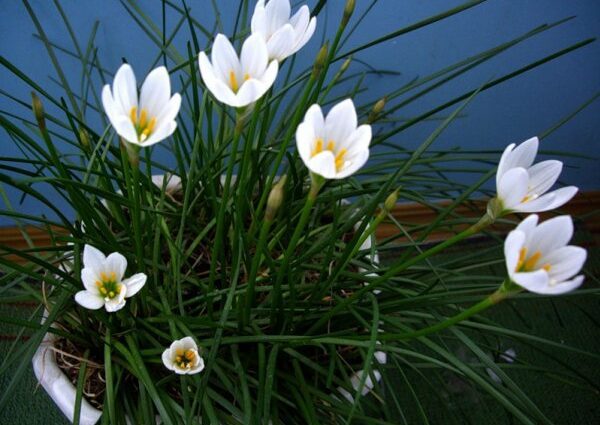The upstart home flower comes from the American tropics, but it takes root well in apartments. Its cultivation will not cause difficulties if you know the needs of the plant and create suitable conditions for it.
In nature, the time of its flowering coincides with the rainy season, when strong winds blow. Because of this, it is called the rain lily and zephyranthes, that is, the flower of the wind god Zephyr. There are about 100 varieties, but less than 10 can be grown in an apartment.
Upstart tropical flower suitable for indoor growing
It is a bulbous plant with narrow, tubular or lanceolate basal leaves that grow up to 40 cm in length. Flowers, located singly on a peduncle, are white to red in color and look like highly blossoming crocuses. Zephyranthes spends most of the year in peace, hiding underground from drought. With the onset of the rainy season, it begins to grow rapidly, throws out an arrow with a bud, which literally blooms before our eyes, but blooms for only a few days.
Flowering may occur at different times depending on the variety. Golden Zephyranthes bloom in December, large-flowered in July, and snow-white from August to October. Some of them require a rest period. When their leaves are dry, the plant is placed in a dark, cool place until spring. Others continue to turn green, they do not need cold, but watering is reduced.
Due to errors during cultivation, flowering may stop, the leaves dry out ahead of time or the roots rot.
To prevent this from happening, the upstart needs the following conditions:
- Lighting. For a flower, a southern or southeastern window sill is best suited. He loves the sun, but needs protection from direct rays. In the summer, you can take it out to the balcony or yard.
- Temperature. In summer, you need warmth up to + 25 ° C, in winter, cool. Temperatures below + 10 ° C are not allowed, otherwise the upstart will die.
- Watering. The soil must be watered all the time with settled water, especially during flowering. During the rest period, it is enough to slightly moisten the bulbs. To prevent the roots from rotting, a drainage layer is needed in the pot, and during the growing season, weekly fertilizing with mineral fertilizers is required.
- Transfer. Choose a low and wide pot, fill it with loose, nutritious soil and replant the flower annually.
- Reproduction. Over the course of a year, babies grow on the mother’s bulb, which are separated during transplantation and placed in separate pots. You can use seeds for reproduction, but this method is too laborious and unreliable, since you need to provide artificial pollination, wait for the fruit to ripen, grow seedlings, which is problematic with low germination of seeds, planting it.
Some varieties in the southern regions can be grown outdoors. But in this case, after flowering, they will have to be dug up and transferred to a room for wintering.
In the right conditions, the upstart will flourish and live for several years, bringing a piece of the tropics to our homes.










